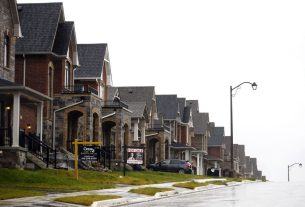WASHINGTON: US business activity unexpectedly rebounded in February, reaching its highest level in eight months, according to a survey on Tuesday (Feb 21), which also showed inflation subsiding.
S&P Global said its flash US Composite PMI Output Index, which tracks the manufacturing and services sectors, increased to 50.2 this month from a final reading of 46.8 in January.
That ended seven straight months of the index being below the 50 mark, which indicates contraction in the private sector. The services sector accounted for the rise in business activity, while manufacturing remained weak. Economists polled by Reuters had forecast the flash Composite PMI Output Index at 47.5.
“Despite headwinds from higher interest rates and the cost of living squeeze, the business mood has brightened amid signs that inflation has peaked and recession risks have faded,” said Chris Williamson, chief business economist at S&P Global Market Intelligence. “At the same time, supply constraints have alleviated to the extent that delivery times for inputs into factories are improving at a rate not seen since 2009.”
The rebound in business activity fits in with recent robust data on retail sales, the labour market and manufacturing production, which have suggested solid momentum in the economy at the start of the year.
The strong reports have fanned fears that the Federal Reserve could maintain its interest rate hiking campaign through summer. The US central bank has raised its policy rate by 450 basis points since last March from near zero to a 4.50%-4.75% range. Though two more rate increases of 25 basis points are expected in March and May, financial markets are betting on another increase in June.
The flash composite new orders index rose to 48.6 this month from a final reading of 47.8 in January. According to S&P Global, “customer hesitancy, destocking and the impact of higher interest rates and inflation on spending” were cited as factors weighing on new orders.
With demand lacklustre, inflation continued to retreat. A measure of prices paid by businesses for inputs fell to 60.6 this month from a final reading of 63.0 in January.
The survey’s flash manufacturing PMI rose to 47.8 from 46.9 in January. New orders remained subdued. The survey’s flash services sector PMI increased to 50.5 from 46.8 in January. The index had contracted for seven consecutive months.
Meanwhile, US existing home sales dropped to the lowest level in more than 12 years in January, but the pace of decline slowed, raising cautious optimism that the housing market slump could be close to reaching a bottom.
The report from the National Association of Realtors on Tuesday also showed the smallest increase in annual house prices since 2012, which should help to improve affordability. It will, however, be a while before the housing market turns the corner.
Mortgage rates have resumed their upward trend after robust retail sales and labour market data as well as strong monthly inflation readings raised the prospect of the Federal Reserve maintaining its interest rate hiking campaign through summer.
“The marginal decline in existing home sales in January supports our view that housing market activity is reaching a trough,” said Sam Hall, property economist at Capital Economics. “But growing economic headwinds and stretched affordability mean sales will recover only gradually this year.”
Existing home sales fell 0.7% to a seasonally adjusted annual rate of 4.00 million units last month, the lowest level since October 2010, when the nation was grappling with the foreclosure crisis. That marked the 12th straight monthly decline in sales, the longest such stretch since 1999.
Sales fell in the Northeast and Midwest, likely because of harsh weather, but rose in the South and West.
Economists polled by Reuters had forecast home sales rising to a rate of 4.10 million units. Home resales, which account for the biggest share of US housing sales, plunged 36.9% on a year-on-year basis in January.
The housing market has been the biggest casualty of the Fed’s aggressive monetary policy tightening. Residential investment has contracted for seven straight quarters, the longest such stretch since 2009.
Government data last week showed single-family homebuilding and permits for future home construction declining in January.
The 30-year fixed mortgage rate rose to an average 6.32% last week from 6.12% the prior week, according to data from mortgage finance agency Freddie Mac. The second straight weekly increase reflected a spike in US Treasury yields.
But there are some rays of hope. Homebuilders confidence rose to a five-month high in February, though morale remains depressed. The median existing house price increased 1.3% from a year earlier to US$359,000 (RM1.59 million) in January as homeowners whose properties have been on the market for a while lowered asking prices. That was the smallest annual gain since February 2012.
Properties typically remained on the market for 33 days last month, up from 26 days in December.
“Buyers are beginning to have better negotiating power,” said NAR chief economist Lawrence Yun. “Homes sitting on the market for more than 60 days can be purchased for around 10% less than the original list price.” – Reuters



